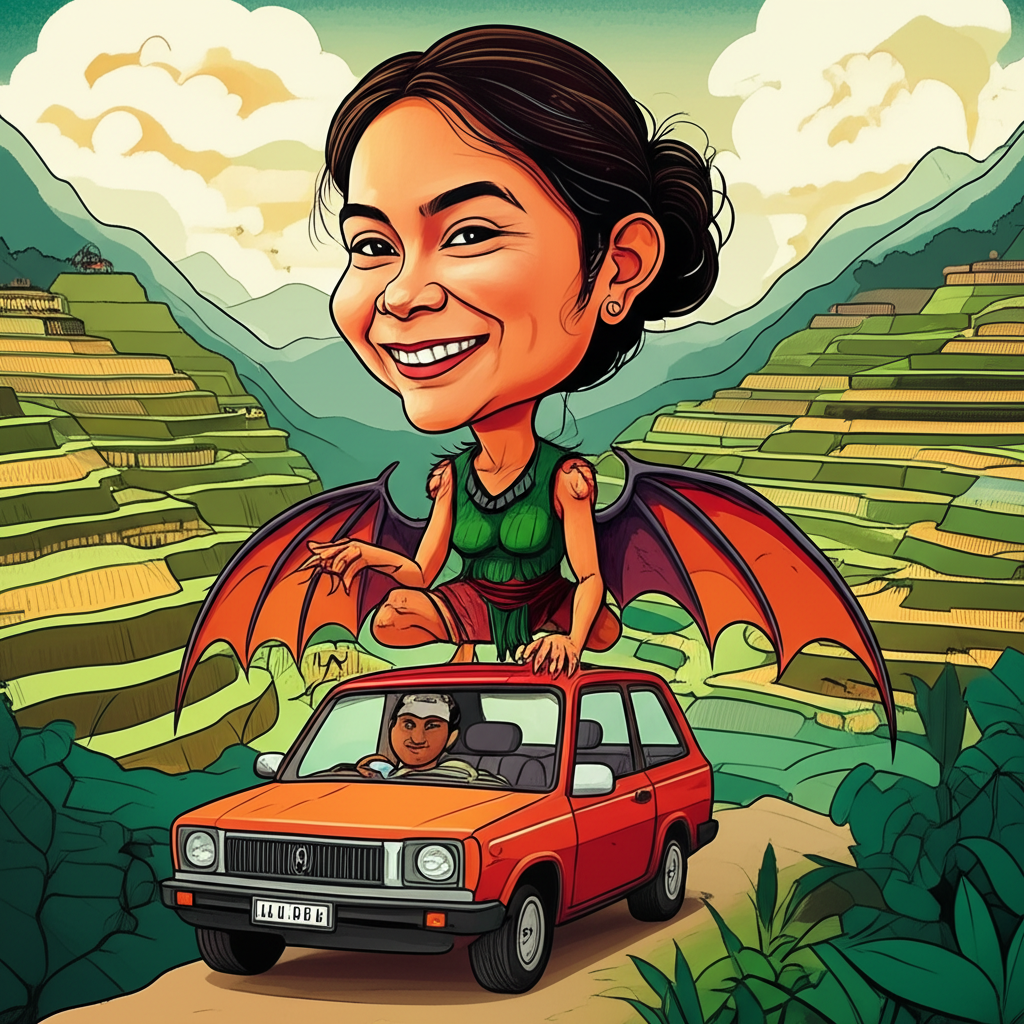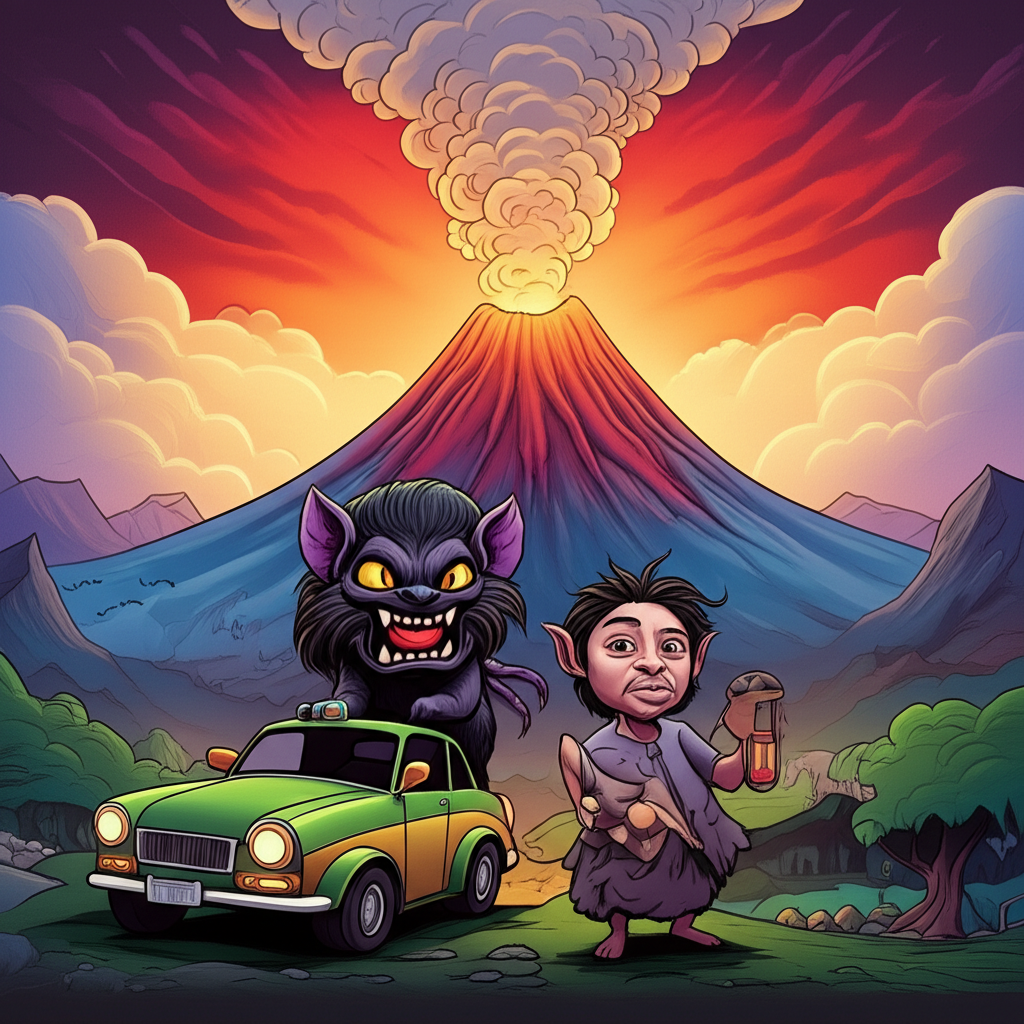
From the verdant, mist-shrouded mountains of the Cordillera Administrative Region in the Philippines, where rice terraces carve emerald stairways into the very soul of the earth, a tapestry of ancient tales unfolds. These are not stories of stone and mortar, but of the breath of spirits, the whispers of the unseen, and the enduring wisdom passed down through generations. Among these narratives, the echoes of Bathala, the supreme deity in some Filipino mythologies, intertwine with the haunting presence of the Aswang, and the silent, stoic grandeur of the Ifugao Terraces. It is crucial to understand that these are traditional stories, born from the fertile imagination of ancient peoples, offering a window into their worldview, their fears, and their profound connection to the natural world. They are not to be mistaken for literal truths or divine pronouncements, but rather as cultural artifacts, rich with symbolism and historical resonance.
The era in which these tales were most vibrantly shared was a time when the world was perceived as a place teeming with both benevolent and malevolent forces, where the veil between the tangible and the spiritual was thin. The Ifugao people, renowned for their unparalleled engineering prowess in constructing their iconic rice terraces, lived in intimate communion with their environment. The towering mountains, the life-giving rivers, the unpredictable weather – all were imbued with a spiritual essence. Their worldview was animistic, a belief system that attributed a soul or spirit to natural objects, phenomena, and beings. In such a context, it was natural for them to explain the inexplicable, to find meaning in the cycles of nature, and to personify the forces that shaped their lives. The Aswang, a creature of folklore that manifests in various terrifying forms across Philippine mythology, likely emerged from these deep-seated beliefs, representing the primal fears of the unknown, the dangers that lurked in the darkness, and the vulnerability of human existence.
The Aswang, as it is depicted in these ancient narratives, is not a single entity but a collection of terrifying beings. It is often described as a shapeshifter, capable of transforming into a dog, a pig, or even a bird. Its most dreaded form is that of a viscera-sucker, with a long, prehensile tongue that can extend to reach its prey. Some tales speak of it dismembering itself, with the upper torso flying through the night to seek victims, while the lower half remains hidden. Symbolically, the Aswang embodies the disruptive, the predatory, and the forces that threaten the community’s well-being. It represents the dark side of nature, the untamed wilderness that surrounds human settlements, and the anxieties that arise from the unseen dangers that can strike without warning. It is the embodiment of the primal fear of being preyed upon, of the fragility of life in a world that is not always benign.
The narrative that connects these elements often unfolds in the shadows of the Ifugao Terraces, those breathtaking feats of human ingenuity that ascend the mountainsides like colossal, verdant steps. Imagine a time, long before the advent of modern technology, when the nights were deeper and the sounds of the forest more pronounced. The elders would gather around crackling fires, their faces illuminated by the flickering flames, and weave tales to both entertain and instruct. One such tale might speak of a village nestled near the base of the terraces, where the people lived a life of arduous labor, tending to their rice paddies with generations of accumulated knowledge.
In these stories, the Aswang would often be a lurking presence, a nocturnal predator that preyed on the unwary. It might be said that the creature was drawn to the scent of pregnant women or the blood of those who strayed too far from their homes after sunset. The vast, sprawling terraces themselves, while a testament to human resilience and harmony with nature, could also be perceived as a canvas upon which these fears were projected. The dark crevices between the rice paddies, the dense forests that bordered them, the echoing calls of nocturnal creatures – all could be imagined as the domain of the Aswang. Perhaps a story would tell of a young farmer who, returning late from his fields, heard a rustling in the undergrowth. The air would grow cold, a primal instinct would scream danger, and he would feel a chilling presence watching him from the shadows of the terraces. The story would then detail his desperate flight, his heart pounding like a drum against his ribs, as he tried to outrun the unseen pursuer. These tales served not as literal accounts, but as cautionary narratives, teaching children the importance of respecting the night, staying close to home, and understanding the dangers that their ancestors had imagined.
The symbolism embedded within these stories is multifaceted. The Ifugao Terraces, themselves, represent the triumph of human perseverance, community cooperation, and a deep understanding of agricultural cycles. They are a testament to the ability of humans to shape their environment for their sustenance, a harmonious coexistence with the land. The Aswang, in stark contrast, symbolizes the forces that threaten this harmony – chaos, destruction, and the primal fears that humans grapple with. The interplay between the human-made terraces and the mythical creature highlights the constant struggle between order and chaos, between the safety of the community and the dangers of the wild. The Aswang could also represent the consequences of transgressing social norms or neglecting the sacred rituals that were believed to appease the spirits and maintain balance. It was a way for the community to externalize their anxieties and to reinforce the importance of collective responsibility and adherence to tradition.
In the modern world, these ancient tales have found new life and interpretation. The Aswang, as a creature of potent folklore, has become a popular figure in Philippine literature, film, and video games. It is reimagined and recontextualized, often exploring themes of identity, cultural heritage, and the lingering anxieties of the past. The Ifugao Terraces, recognized as a UNESCO World Heritage Site, stand as a powerful symbol of human achievement and cultural preservation, attracting visitors from around the globe who marvel at their beauty and the ingenuity of their creators. Scholars and cultural enthusiasts delve into these narratives, seeking to understand the historical context, the psychological underpinnings, and the enduring legacy of these oral traditions. They are studied not as literal accounts of supernatural beings, but as invaluable insights into the beliefs, values, and societal structures of the people who first shared them.
In conclusion, the echoes of Bathala, the whispers of the Aswang, and the silent guardians of the Ifugao Terraces are not merely stories; they are threads woven into the rich tapestry of Philippine cultural heritage. They are imaginative narratives, born from the minds of ancient peoples, reflecting their understanding of the world, their fears, and their aspirations. As Muslims, we recognize that only Allah is the true Creator and Sustainer of all that exists, and that all power and dominion belong to Him alone. These traditional stories, therefore, are to be appreciated for their cultural significance, their storytelling prowess, and their ability to transport us to a time when the world was understood through myth and metaphor. They serve as a reminder of the enduring power of human imagination, the importance of preserving cultural heritage, and the timeless tradition of passing down stories that illuminate the human experience.





